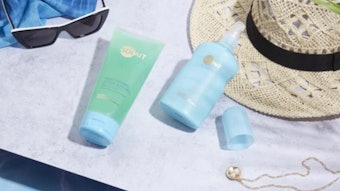
This guest advisor commentary comes from regular Cosmetics & Toiletries contributor and photochemistry expert Craig Bonda, president of Inception Partners, LLC, and technical consultant to the sunscreen industry.
Cosmetics & Toiletries: How do you view the current sunscreen market, especially in terms of testing?
Bonda: In 2016, Consumer Reports magazine reported that more than 40% of the sunscreens they tested over four years failed to meet their SPF claim, including 74% of mineral sunscreens—i.e., those containing titanium dioxide and/ or zinc oxide UV filters—and 42% of sunscreens containing organic UV filters. Clearly, we as an industry need to do a better job of assuring our pre-market SPF testing more accurately reflects the protective ability of the products that consumers buy and use. John Staton of Dermatest in Sydney, Australia, and the ISO Working Group on Sunscreens, of which he is a member, are doing good work in this direction.
C&T: How could changes in regulations make sunscreens better?
Bonda: In my opinion, the U.S. Food and Drug Administration should immediately permit avobenzone to be combined in sunscreens with zinc oxide, titanium dioxide and ensulizole, combinations that are currently prohibited under the Sunscreen Monograph. All four ingredients are generally recognized as safe and effective (GRASE), and there’s no good reason of which I’m aware to deprive sunscreen providers and consumers of products that combine them, especially given the limited palette of UV filters available to U.S. formulators of sunscreens.
C&T: How could sunscreen formulas be improved?
Bonda: Despite the international trend for harmonizing sunscreen testing, persistent regional and national differences in sunscreen regulation, UV filter chemistries and consumer preferences make it likely that formulating globally, i.e., one formula for all markets, although possible, is not the best approach for the foreseeable future.
It’s been often said that the best sunscreen is the one people will use. The formulator’s challenge is to deliver the convenience and pleasant experience consumers prefer without compromising the protection they expect.

!['[Sunscreen] developers will be able to innovate more efficiently while maintaining high standards of quality and safety for consumers.'](https://img.cosmeticsandtoiletries.com/files/base/allured/all/image/2024/06/woman_outside_using_sunscreen_on_face_ISO_test_standards_AdobeStock_783608310.66678a92029d9.png?auto=format%2Ccompress&fit=crop&h=191&q=70&rect=62%2C0%2C2135%2C1200&w=340)









